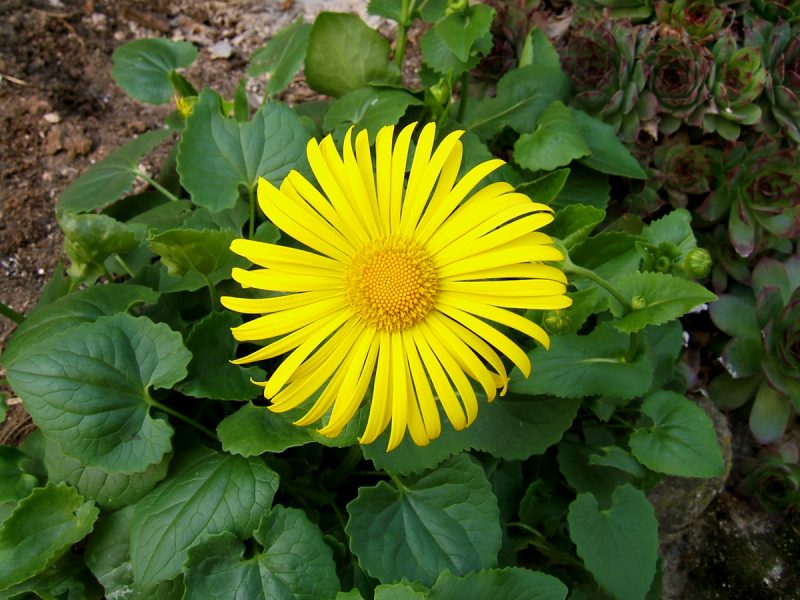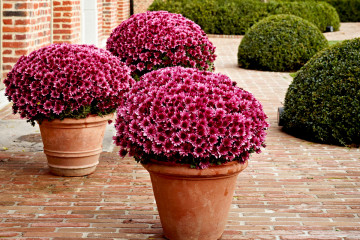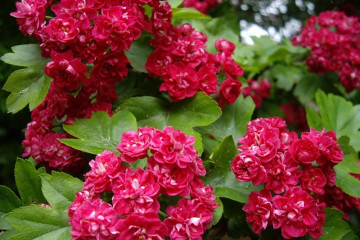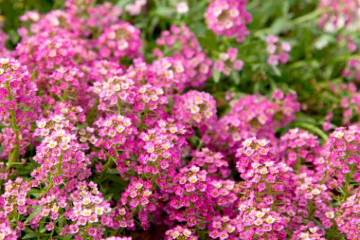Yellow daisies - perennial flowers
Content:
There are flowers that have a special charm and charm. They do not amaze with their size or splendor of flowering, but upon seeing such a plant, every gardener is eager to find a place for him in the garden. These include flowers popularly known as yellow daisies. The scientific name for this species is doronicum.
What a flower
Doronicum is a perennial herb with stalk-enclosing alternate and basal leaves. In the stem sinuses, shoots are formed, on which buds are formed. Also, flowers grow on long peduncles. The height of the doronicum depends on the variety: there are dwarf varieties (10-15 cm) and high (140-150 cm). Tuberous rhizome, superficially located. The fruit is achene.
Yellow daisies belong to the Astrovye family. Along with the columnar ratibid, similar in color to the doronicum, the plant is often called the flower of the prairie. However, a hardy perennial is able to take root not only on the plains. It is common in European mountain ranges and can settle at an altitude of 3500 m above sea level.
Interesting varieties
In total, there are about 40 varieties of doronicum. 12 of them grow in Russia, only a few are especially popular.
Oriental
Eastern Doronicum (Doronicum Orientale Hoffing) in another way can be called Caucasian. This is the most frequent inhabitant of Russian gardens. Under natural conditions, it is most common in the Caucasus and the Mediterranean.
Plant height is about 50 cm. Tuberous roots, lie close to the soil surface. Basal leaves are dentate, petiolate, stem, ovoid, sessile. Yellow flowers bloom in mid-May, flowering period lasts about a month. After that, the aerial parts of the yellow chamomile die off. The new green outlet will appear only at the end of summer.
The species was domesticated in 1808.The most common varieties are Spring Beauty, Gold Dwarft, Little Leo. All are undersized, compact, highly decorative.
Plantain
Plantain doronicum (Doronicum Plantagineum) is distinguished by slight pubescence of leaves and trunks. It is larger than its Caucasian relative (up to 140 cm tall), forms large inflorescences, blooms 7-10 days later. In natural conditions, it grows in the west of Europe.
The most popular varieties include Miss Mason, Harpuf Crewe.
Austrian
Austrian Doronicum (Doronicum Austriacum Jacq) has an average height (up to 70 cm) and bright flowers with an orange center.
An ornamental plant blooms in August.
Growing from seeds
Before starting to grow doronicum from seeds, you need to decide when to plant a plant and how to care for it. It is not difficult to get healthy, profusely blooming yellow daisies, thanks to the unpretentiousness of the flower.
Seedling
The seedling method is a little more troublesome than planting seeds directly into the ground. However, it gives better results.
Sowing for seedlings is best started in April. For sowing, a container with cells is selected, which are filled with a nutrient substrate (1 part of peat and coarse sand). Sow 2-3 seeds in 1 cell, sprinkle with water. The container is covered with glass or foil and placed in a lighted place, protected from direct sunlight. Further care consists in daily airing of the plantings and periodic moistening of the soil from a spray bottle.
Seedless method
Sowing directly into open ground is carried out from mid-April, when the air temperature reaches 16 ° C, or in late autumn.
Prepare the soil about 2 weeks before sowing. It is dug onto the bayonet of a shovel and carefully break up the lumps. When the soil settles, shallow (1-2 cm) grooves are made in it. The distance between the rows must be at least 20 cm. The plantings must be spilled with water. Seedlings sprout amicably and abundantly, therefore, after their appearance, thinning will have to be done. There should be at least 7 cm of space between adjacent plants. When the height of young plants reaches 10 cm, it is time to plant them in permanent places. The interval between two adjacent seedlings is 25 cm.
Basic rules for growing
The main points associated with planting seedlings in the ground and then caring for them are very important to get beautiful, healthy plants.
Planting capacity and soil
For planting seedlings, you can use not only honeycomb containers, but also boxes, pots and cups. The main thing is to keep a distance, not thickening the landing. As a nutrient substrate, it is enough to take a mixture of peat with humus or store universal soil.
The right time to sow
Sowing for seedlings is carried out in early April, young plants are placed in open ground in early June.
For planting in the garden before winter, mid-November or April is suitable.
Site selection and soil preparation
The main requirement for the soil is lightness and looseness. To prevent the seeds from falling through, you have to wait for shrinkage after digging. If the soil is depleted, rotted manure can be embedded in the beds during digging.
Material preparation and sowing
Yellow chamomile seeds remain viable for 2 years. They sprout actively once they get into the soil, so the seedlings will have to be thinned out. Since seed material, when stored correctly, is resistant to damage and deterioration, no special preparatory procedures are required.
How to care for seedlings
With the seedling method of cultivation, seedlings appear a couple of weeks after sowing. At this time, the shelter from the container is removed and the plants are moved to a brighter place. If the weather does not please with sunny days, it is recommended to supplement the seedlings with a phytolamp.
To make the plants more lush, in the phase of the 3rd leaf, you need to pinch their tops.
Landing in the ground
A week before planting (at the end of May), it is time to take the seedlings out into the open air for hardening, first for an hour, gradually increasing the time to a day.
How to plant seedlings:
- Dig the site 20-25 cm deep. Add rotted manure;
- Dig planting holes of such a size that a root with an earthen clod would fit in them. The distance between the holes should be at least 0.4 m, because the doronicum grows strongly;
- Plant the plants in the holes, gently press the soil at the roots and pour abundantly with cold water.
Outdoor care
With a plant such as doronicum, planting and care is not labor. The flower is unpretentious and endures weather anomalies.
Watering
Doronicum should be watered regularly, since the root system located at the surface cannot take moisture from the deep layers of the soil. It is better to use settled water. To prevent the soil from drying out longer, it is recommended to mulch it with sawdust.
Spraying
In hot weather, the plant will benefit from evening spraying or sprinkling. It is not necessary to be too zealous with watering, so as not to provoke diseases. Yellow daisies do not like excessive moisture and shade, so it is better not to place them under large trees and in lowlands.
Priming
Kozulnik does not like acidic, clayey, heavy soils. Most likely, the hardy plant will not die, but it will grow small, weak, with small flowers. The best option is a light, loose, slightly acidic soil with a sufficient amount of nutrients.
Top dressing
In the spring, the plant can be pampered with complex fertilizers, the flower reacts equally well to both mineral compositions and organic matter. At the end of summer, when new outlets are being built up, it will not be superfluous to feed the goat with nitrogen-containing compounds.
When and how it blooms
Doronicum is a flower that can change the size of the petals and the intensity of color depending on weather conditions. In general, the flowers look like small daisies, which is why they are often confused with feverfew. The color of the petals is bright yellow, the center may be darker, up to brown. In diameter, inflorescences are from 4 to 15 cm, depending on the variety.
Flowering begins in spring and lasts all summer. Cut doronicum flowers can stand in water for up to 14 days, keeping a fresh look.
Transfer after purchase
As a rule, Doronicum is sold in seeds. If seedlings are purchased, they are planted in the ground or left on the windowsill to grow. The time when it is time to transplant doronicum comes in a year, when it is time to divide the plant.
Possible growing problems
Although yellow chamomile is a non-capricious plant, there are still problems with its cultivation. They can be solved using special products and adjusting the care regimen.
Pests
The ubiquitous aphids and thrips do not ignore the yellow daisy. Small insects sucking sap do not cause significant harm at first. But, having multiplied, they are able to lead the doronicum to death.
There are many different insecticides that can be used to successfully control parasites. It is enough to process the planting according to the instructions, and small parasites will not be afraid of the garden “suns”.
Sometimes slugs eat up the foliage. To prevent their appearance, it is enough to sprinkle the soil around the flower with hot, ground pepper. The sensitive abdomen will not allow harmful creatures to overcome the obstacle.
Diseases
Gray rot appears on plants in thickened plantings, with excessive watering. It is advisable to thin out the plants, remove the infected parts and adjust the watering regime.
Rust and powdery mildew also most often attack waterlogged plantings. In this case, watering must be reduced, the damaged parts of the plant must be removed. Spray doronicum with Topaz or another preparation of similar action.
Signs of improper care
Doronicum can give small flowers if it has not been planted for a long time. For rejuvenation, the plant is dug up and divided into parts. New flowers on the renewed goat will be noticeably larger. Another problem with growing is too much light. When placing a plant on a site, it is worth remembering that, although the doronicum is photophilous, excessive exposure to the rays of the sun provokes the crushing of flowers.
Planting and caring for doronicum outdoors is extremely simple.Even a beginner will cope with them, who will be doubly pleased to enjoy the bright flowering of a garden pet.





















